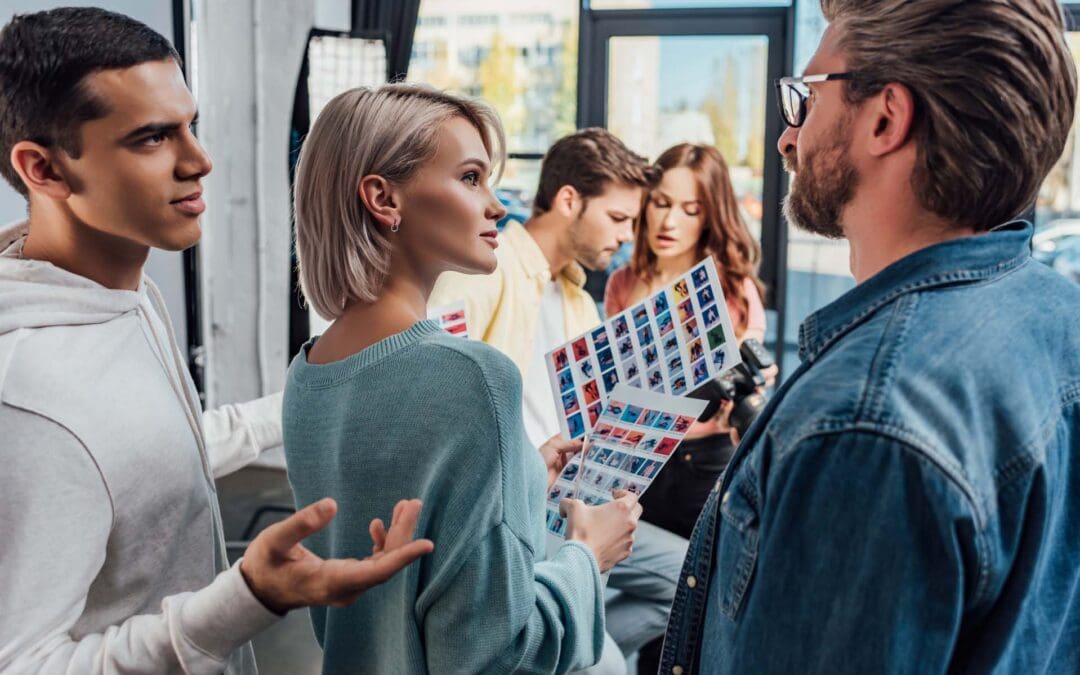Cinematic production design is an art form that shapes the visual world of a film, creating immersive and compelling settings that enhance storytelling and evoke emotions. Production designers work collaboratively with directors and other key creatives to bring the film’s vision to life, from crafting intricate sets to selecting props and costumes. In this extensive blog post, we will explore the multifaceted world of cinematic production design, its essential elements, its impact on storytelling, and the collaborative process that brings a film’s visual narrative to fruition.
1. The Role of the Production Designer
a. Visual Storytellers: Production designers are visual storytellers who translate the script’s world and characters into tangible settings that evoke emotions and immerse the audience in the film’s narrative.
b. Collaboration: Production designers collaborate with the director, cinematographer, costume designer, and other departments to ensure a cohesive and immersive visual experience.
2. Understanding the Script and Director’s Vision
a. Script Analysis: Production designers deeply analyze the script to understand the story’s themes, settings, and character arcs that influence the design.
b. Director’s Vision: The production designer works closely with the director to interpret their creative vision and translate it into the film’s visual aesthetics.
3. Creating Visual Concepts and Mood Boards
a. Visual Research: Production designers conduct extensive research to gather visual references, historical context, and artistic inspirations for the film’s design.
b. Mood Boards: Mood boards are collages of images and color palettes that help convey the intended mood and visual style of the film to the entire creative team.
4. Designing Sets and Locations
a. Art Direction: Art directors oversee the design and construction of sets, ensuring they align with the film’s vision, budget, and practical requirements.
b. Practicality and Authenticity: Production designers consider practicality and authenticity in set design to create believable and functional spaces for the characters.
c. Location Scouting: Finding suitable locations that match the film’s vision is a crucial task undertaken by production designers.
5. Prop Design and Set Dressing
a. Prop Selection: Production designers carefully select props that complement the characters and settings, providing visual cues that enhance the storytelling.
b. Set Dressing: Set dressers add details and personal touches to the sets, making them feel lived-in and authentic.
6. Costume Design
a. Character Psychology: Costume designers work closely with the production designer and director to understand each character’s psychology, translating it into their clothing choices.
b. Color and Texture: Costume designers use color and texture to evoke emotions and reflect character traits.
7. Color Theory and Lighting
a. Color Palette: Production designers work with cinematographers to establish a color palette that supports the film’s themes and emotional tone.
b. Lighting Design: Lighting enhances the production design, creating atmosphere and depth in each scene.
8. Special Effects and Visual Effects (VFX)
a. Practical Effects: Production designers collaborate with special effects teams to create practical effects, enhancing realism and immersiveness.
b. Visual Effects (VFX): VFX artists add digital elements and enhancements to the production design, expanding the film’s visual possibilities.
9. Period Films and Fantasy Worlds
a. Period Films: Production designers researching and recreating historical eras bring authenticity and accuracy to period films.
b. Fantasy Worlds: Crafting imaginative and visually stunning fantasy worlds requires a blend of artistic creativity and technical prowess.
10. Budget and Time Management
a. Budgeting: Production designers work within the film’s budget, making strategic choices to maximize visual impact while staying cost-effective.
b. Time Management: The production design process requires careful planning to ensure that sets, props, and costumes are ready for filming.
11. Collaboration and Communication
a. Team Collaboration: Production designers collaborate with various departments, fostering communication to align everyone’s efforts towards the film’s visual cohesion.
12. The Power of Cinematic Production Design
a. Visual Storytelling: Production design plays a significant role in conveying emotions, setting the tone, and supporting character development.
b. Audience Immersion: Well-crafted production design immerses the audience into the film’s world, allowing them to feel connected to the characters and their journey.
Cinematic production design is an intricate art form that goes beyond aesthetics. It plays a vital role in shaping a film’s visual narrative, enhancing storytelling, and elevating the audience’s cinematic experience. Production designers are instrumental in translating the director’s vision into tangible and captivating settings that immerse the audience in the film’s world. Through their creativity, attention to detail, and collaboration, production designers breathe life into the cinematic universe, making it an essential and influential component of the filmmaking process.




